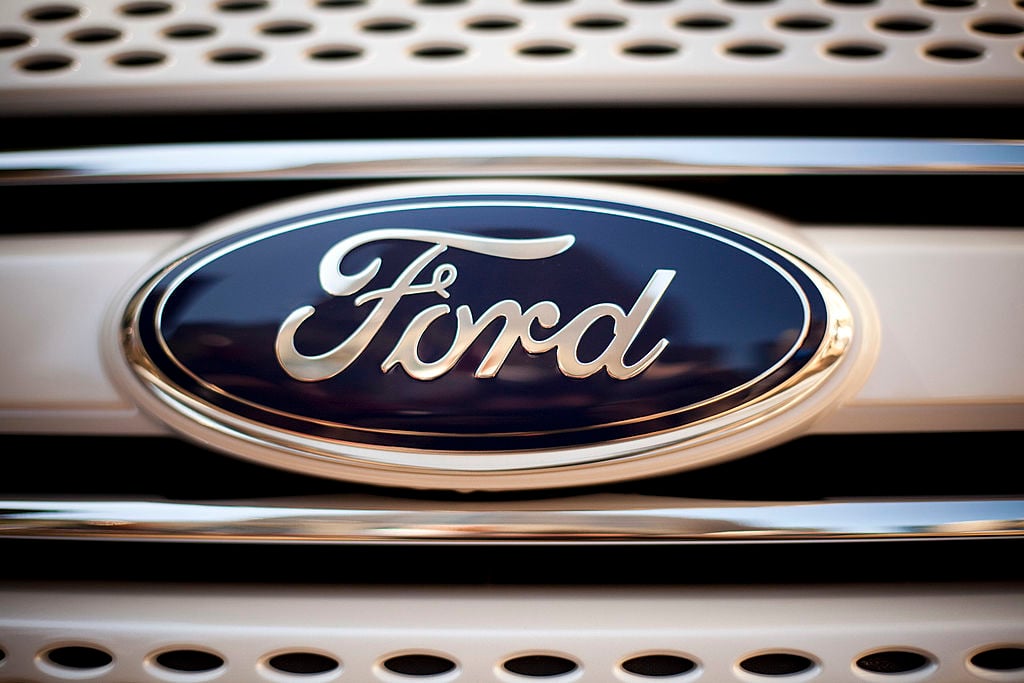
May was the best month for sales of Ford's F-150 and its Super Duty siblings since 2007. Photo credit: Ford Motor Co.
Ford (F +2.41%) had another strong month in May, with its U.S. sales rising 14% over year-ago levels, ahead of both analysts' estimates and the overall market's sales pace.
The story here is a simple and good one for Ford: Good products plus an improving economy equals great sales gains.
Sales of Ford's newest products continued to show strong growth, while its most profitable products – the F-Series pickup line – hit sales levels not seen since 2007.
That all suggests great things for Ford's second-quarter profits. But behind the headlines, there's more good news for Ford shareholders. Let's take a closer look.
Two big economic forces driving strong results at Ford
According to Ford's sales analyst, Erich Merkle, there are two big dynamics at work in the U.S. auto market right now.
As he put it in a conference call on Monday morning, "We have seen a long-term trend toward smaller cars and utilities, which began in 2004." That trend is still very much in force, Merkle said. "At the same time, we also witnessed a cyclical rebound in full-sized pickups."
What's that mean in terms of Ford's sales? Simply put, it means that Ford's sales gains are outpacing the overall market's, because Ford has strong products in the areas that are booming right now.
Sales of the F-Series line of pickups – that's the F-150 and its Super Duty F-250 and F-350 siblings – totaled 71,604 in May, up almost 31%. That's the first time Ford has sold more than 70,000 full-sized pickups in a month since March of 2007, the company said.
Meanwhile, Ford's sales of its fuel-efficient car models were also strong. The small Fiesta, compact Focus, and mid-sized Fusion each gained about 10% over year-ago sales totals in May. And Ford's entry in the compact utility wars – the Escape, all-new last year – continued to show impressive strength, up 28% for the best month in Escape's 13-year history. Yep, best ever.
Making gains in Toyota and Honda strongholds as well
Ford's U.S. sales chief, Ken Czubay, spoke enthusiastically on Monday about the company's recent sales gains in what has not always been Ford-friendly territory – coastal U.S. cities.
Again and again, Czubay pointed to gains in the Los Angeles, San Francisco, and Miami regional markets for Ford's fuel-efficient new models like the Fusion and Escape. Those are Toyota (TM 1.64%) and Honda (HMC 1.70%) strongholds – and Ford is very pleased to be gaining ground on its longtime Japanese rivals.
Czubay also noted that the F-Series saw big sales gains in the Los Angeles, Phoenix, Miami, and New York metro markets – all places where new-home construction has taken off recently. Texas remains the pickups' largest market, and sales there have been strong as purchases from oil services companies have been on the rise. Ford isn't the only company benefiting, of course – General Motors (GM 1.17%) saw its own full-sized pickup sales rise 23% in May on those same trends.
But the best part of this story is that while Ford's sales have been strong, its incentives haven't risen significantly – and neither have its fleet sales. Merkle said that Ford's incentives were up very slightly versus last month, but well in line with Ford's recent practice.
Meanwhile, he noted that 33% of Ford's total sales in May were fleet sales. Despite the tendency of some investors to knock fleet sales as low-margin business, the right kind of fleet sales – commercial and government business – can be a good thing, and 33% is right in line with expectations.
Of that 33% in May, Merkle said that 14% of sales were commercial, 5% were government, and 14% were daily rental fleet sales. That's down a bit from last year, with the decrease coming almost entirely in daily rental fleet sales. This is good news.
A "perfect scenario" for increased profits at Ford
I talked to Jesse Toprak, the chief auto sales analyst at TrueCar.com, about Ford's sales report on Monday. Toprak said that Ford's average transaction price was probably up about 4.5% in May, as good sales of pickups and SUVs skewed Ford's overall product "mix" toward its most profitable products.
As he noted, flat or lower incentives, higher average transaction prices, and increased sales are a "perfect scenario" for increased profitability, one that bodes very well for Ford's second-quarter results.
Ford's profits in recent quarters have been powered by strong results in what CEO Alan Mulally calls Ford's "engine" – its North American region. Clearly, Ford's engine was running very well in May – and its second-quarter profits, at least for North America, look to be in good shape.









